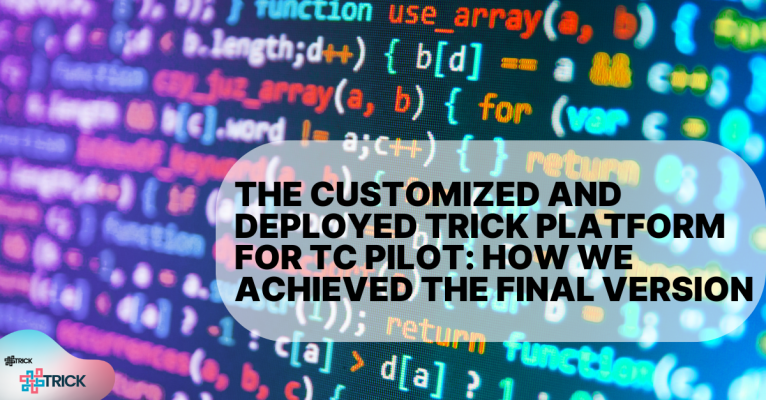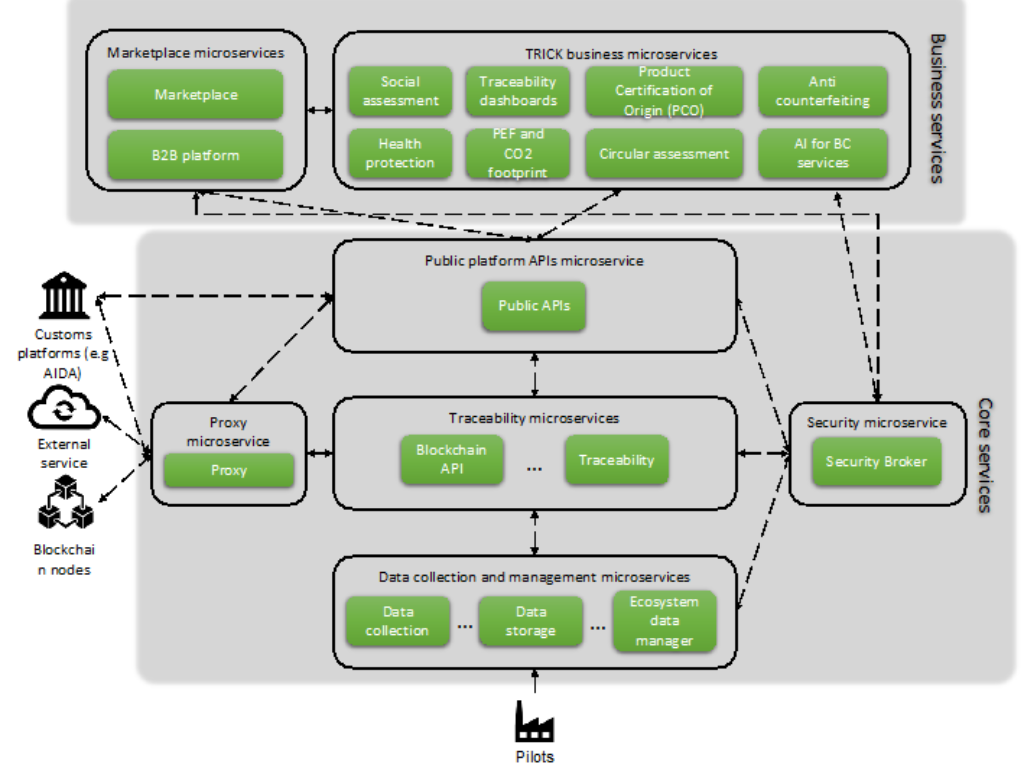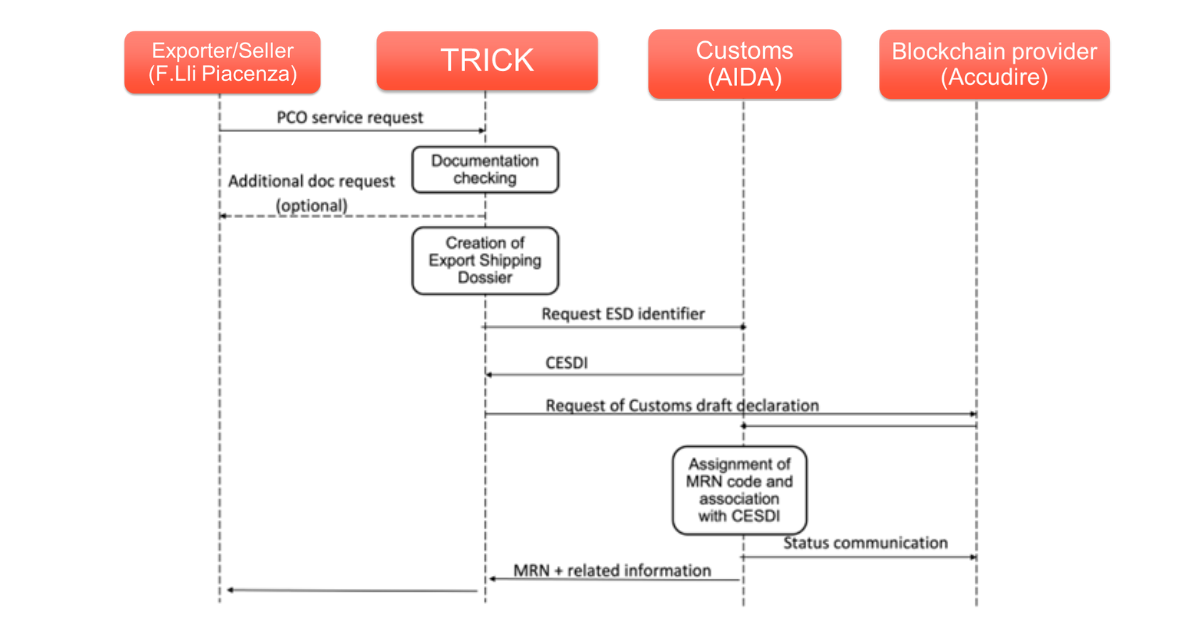
Caricamento

Caricamento

The long journey of TRICK is coming to an end, and we can finally give concrete form to the product traceability standardisation activities at the heart of the project: that is the development of a complete, reliable, SME-affordable and standardised platform for data collection, secured by Blockchain.
With the conclusion of Task 5.2 “Integration and testing”, led by Domina, the project is now capable of presenting the final version of the demonstrators. This process that refines the first version of the platform for Textile/Clothing, and the related replication dedicated to Food sector, already released, included issues regarding rolling out the new versions of the platform (for both the TC and the Food pilot) and the tools, architecture updates, bug fixing, code evolution, management of unexpected events. Moreover, the Task bring an end to all the technical and development activities.
Here we will focus our reporting on the ultimate version of the demonstrator for the Textile pilot, and it is worth reminding the three concrete objectives underlying the development of the platform:
In wider terms the aims of the Task (delved more deeply in the related D5.3 “Customized and deployed platform for TC pilot, second version”) can be summarized as follow:
In the following paragraphs, alongside the main steps for the final development stages of the textile platform, we will examine the fine-tuning of the PCO service, two activities led by Domina in its role of technical manager and IT provider for the TC pilot:
The TRICK platform will provide a wide range of services, accessible to different types of stakeholders at different stages of confidentiality. In this context the platform architecture, including the skeleton to support both core and business services, cannot miss the security aspects. Therefore, a crucial role is played by the implementation of a component for orchestrating the security related to the access and management of the stored data (e.g. Blockchain infrastructures and databases): that is the Security Broker, a component able to provide all the full security functionalities and to regulate the access to production data by assuring the management of authentication, authorization, confidentiality and privacy.
After the implementation of the component provided in Task 2.4, Domina arranged for some updates in the following sections, in support of some specific needs identified within different use-cases showing that a refinement of the components was necessary:

Security Broker in TRICK platform architecture
The TRICK platform is composed of core and business services which ingest, manipulate, transform and enrich Textile and Food value chain information. The guidelines for the development of services within the platform remained as they were in the first version, and we summarise them here for the readers’ convenience:
However, a change was necessary regarding the Circular assessment service (CAS) because of an issue related to its integration. This service takes as inputs the data collected by the platform, together with a set of technical information coming from the partner Deutsche Institute für Textil- und Faserforschung Denkendorf (DITF), that are part of the company know-how. CAS performs a set of elaborations with this data to give a result by using DITF internal services that cannot be moved directly to the TRICK platform. Therefore, the integration strategy was changed to manage the Circular assessment service as external service, similarly to the AIDA ones (provided by Italian Customs - CUS).
In testing, Domina adopted the Fuzzy logic (https://en.wikipedia.org/wiki/Fuzzy_logic) to better identify security problems or internal server errors in case of wrong or malformed inputs. This is one of the most frequently used approaches for software testing, with the definition of a set of random or pseudo-random values. In the case of TRICK we defined the input values of two categories:
Regarding the Textile & Clothing pilot, the TRICK platform provides 6 services, all related to the product and supply chain traceability concept:
All of the services were already integrated in the previous technical sessions, however in this latest tranche of activities, some lesser updates were added and some Bug fixes were introduced.
Among these 6 services, Domina focused on the release of the PCO (Preference Certificate of Origin) digitalization, a procedure providing the following useful and concrete objectives in import-export transactions:
During the first integration phase the PCO service reached a very good integration status, also considering the interaction with external services of AIDA (Italy Customs service). However, two activities have been carried out during the second integration stage related to the introduction of document signature for AIDA data exchange, and to the Bug fixing.
The former is a fundamental activity to establish a real communication between the PCO service and the AIDA. This is a public service, and it is subjected to strong security requirements, therefore, it requires digital signatures applied to exchanged XML documents.
The following figure depicts the simplified sequence diagram for the PCO service and it represents the XML document interactions between the TRICK platform and AIDA.

The most evident barrier during the integration activities, was the difficulty encountered by the partners in following the micro-service approach and shipping the service by using a set of Docker containers. Therefore, DOMINA provided the support to build the set of required containers to host the business service, putting at disposal its internal skills to meet the requirements of Task 2.5. The task officially closes the technical and development activities related to the project, and now the latest step of TRICK for the next few months belong to the exploitation and refer to the future commercial strategies of the IT partners and their investment routes.